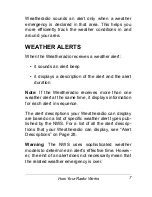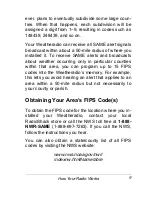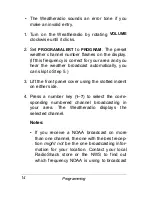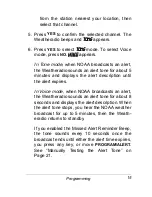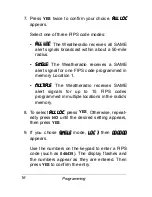
6
How Your Radio Works
ˆ
How Your Radio Works
Traditional weather radios simply receive the National
Oceanic and Atmospheric Administration (NOAA)
weather broadcast (usually within a 50-mile radius)
then sound an alarm if an emergency code was trans-
mitted along with the broadcast. This means that peo-
ple who live outside an affected area are often alerted
even when their area is not affected, causing many of
them to ignore potentially real weather warnings that
can save lives.
In 1994, NOAA began broadcasting coded signals
called FIPS (Federal Information Processing System)
codes along with their standard weather broadcasts
from stations in your area. These codes identify the
type of emergency and the specific geographic area
(such as a county) affected by the emergency. Your
Weatheradio receives, interprets, and displays infor-
mation about the codes so you can determine if the
emergency might affect your area. Only SAME com-
patible weather radios (such as this Weatheradio)
are able to take advantage of this new technolo-
gy.
Each FIPS code identifies a specific geographic area
(defined by the National Weather Service), so your







